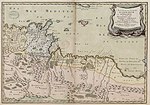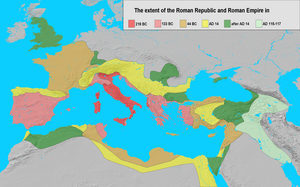| History of Tunisia |
|---|
 |
|
|

Roman Tunisia initially included the early ancient Roman province of Africa, later renamed Africa Vetus. As the Roman empire expanded, the present Tunisia also included part of the province of Africa Nova.
The Carthaginian (or Punic) empire was finally defeated by the Romans in the Third Punic War (149–146 BC) and there followed a period when nearby kingdoms of Berber kings were allied with Rome and eventually these neighbouring countries were annexed and reorganised. The city of Carthage was rebuilt, eventually becoming the capital of the province and the 3rd city of the Empire.
A long period of prosperity ensued based on rich agricultural exports, leading to a cosmopolitan culture.
Christianity became important in the province and provided Roman Catholicism with three Popes, as well as Augustine of Hippo.
The Vandals invaded Tunisia in 439 with the help of the Maurii (Libyans of Northwest Africa) and reigned over the province for nearly a century. Several Berber revolts occurred and some established self-rule at the periphery.
The Byzantine Empire eventually recaptured the area from the Vandals in 534, which endured until the Islamic conquest in 705.
